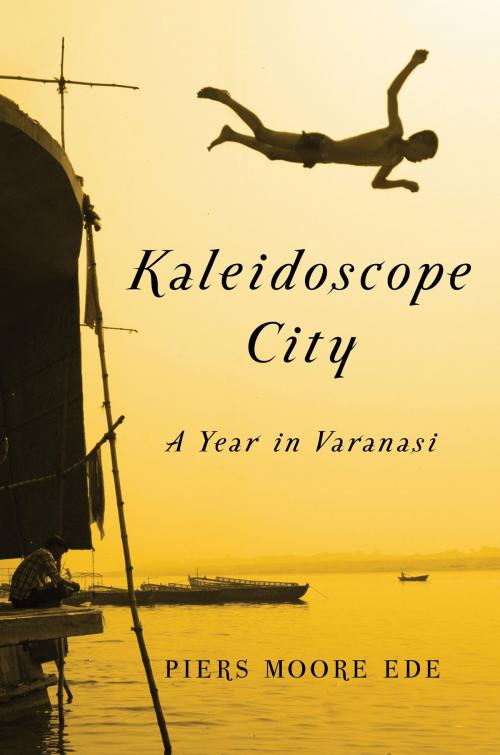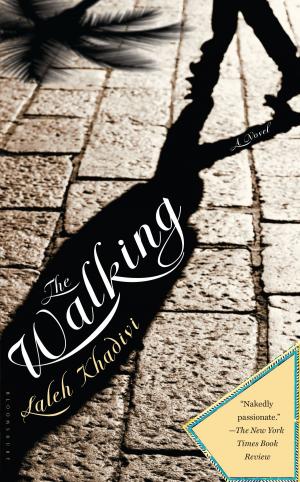| Author: | Piers Moore Ede | ISBN: | 9781620405581 |
| Publisher: | Bloomsbury Publishing | Publication: | April 21, 2015 |
| Imprint: | Bloomsbury USA | Language: | English |
| Author: | Piers Moore Ede |
| ISBN: | 9781620405581 |
| Publisher: | Bloomsbury Publishing |
| Publication: | April 21, 2015 |
| Imprint: | Bloomsbury USA |
| Language: | English |
Situated on the left bank of the Ganges, in the state of Uttar Pradash, Varanasi is one of the oldest continually inhabited cities in the world. For Hindus there is nowhere more sacred; for Buddhists, it is revered as a place where the Buddha preached his first sermon; for Jains it is the birthplace of their two patriarchs. Over the last four thousand years, perhaps no city in the world has stood witness to such a flux of history, from the development of Aryan culture along the Ganges, to invasions that would leave the city in Muslim hands for three centuries, to an independent Brahmin kingdom, British colonial rule, and ultimately independence.
But what is the city like today? Home to 2.5 million people, it is visited by twice that number every year. Polluted, overpopulated, religiously divided, but utterly sublime, Varanasi is a living expression of Indian life like no other. Each day 60,000 people bathe in the Ganges. Elderly people come to die here. Widows pushed out by their families arrive to find livelihood. In the city center, the silk trade remains the most important industry, along with textiles and the processing of betel leaf. Behind this facade lurk more sinister industries. Varanasi is a major player in the international drug scene. There's a thriving flesh trade, and a corrupt police force that turns a blind eye.
As with Suketu Mehta's Maximimum City Piers Moore Ede tells the city's story by allowing inhabitants to relate their own tales. Whether portraying a Dom Raja whose role it is to cremate bodies by the Ganghes or a khoa maker, who carefully converts cow's milk into the ricotta like substance that forms the base of most sweets, Ede explores the city's most important themes through its people, creating a vibrant portrait of modern, multicultural India.
Situated on the left bank of the Ganges, in the state of Uttar Pradash, Varanasi is one of the oldest continually inhabited cities in the world. For Hindus there is nowhere more sacred; for Buddhists, it is revered as a place where the Buddha preached his first sermon; for Jains it is the birthplace of their two patriarchs. Over the last four thousand years, perhaps no city in the world has stood witness to such a flux of history, from the development of Aryan culture along the Ganges, to invasions that would leave the city in Muslim hands for three centuries, to an independent Brahmin kingdom, British colonial rule, and ultimately independence.
But what is the city like today? Home to 2.5 million people, it is visited by twice that number every year. Polluted, overpopulated, religiously divided, but utterly sublime, Varanasi is a living expression of Indian life like no other. Each day 60,000 people bathe in the Ganges. Elderly people come to die here. Widows pushed out by their families arrive to find livelihood. In the city center, the silk trade remains the most important industry, along with textiles and the processing of betel leaf. Behind this facade lurk more sinister industries. Varanasi is a major player in the international drug scene. There's a thriving flesh trade, and a corrupt police force that turns a blind eye.
As with Suketu Mehta's Maximimum City Piers Moore Ede tells the city's story by allowing inhabitants to relate their own tales. Whether portraying a Dom Raja whose role it is to cremate bodies by the Ganghes or a khoa maker, who carefully converts cow's milk into the ricotta like substance that forms the base of most sweets, Ede explores the city's most important themes through its people, creating a vibrant portrait of modern, multicultural India.















